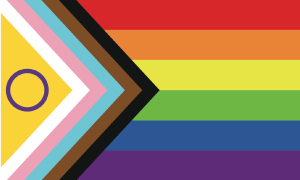Previously known as: CC7 Clients by Funding Category – Specific Project
Report Type: Standard
Purpose: C07 shows the number of clients in selected demographic criteria, and the kinds of parent funding categories that have been attached to the services provided to those clients (and how many times those funding categories have been selected, for that pool of clients).
For example, selecting Gender as Female and Yes to Indigenous Australian from the filter panel will narrow down the number of Total Selected Clients and consequently the number of Services attached to those Clients. Then, the number of services provided to this pool of clients (indigenous women) will be further broken down according to different types of funding categories selected in assisting these clients. The diagram below can be clicked on for a larger view:
The Venn Diagram above shows:
This report can be ‘filtered’ so that the results are limited to data that meets the criteria chosen in the filter panel. The filters available for this report are
Geolocation tool is now available in this report and it is accessible from the filter panel section of the report. Select “Aggregate by Administrative Boundary” in Aggregate.
The following should be considered when analysing this report:
Note that adding up all the funding category columns do NOT add up to Total Selection Client. This is because funding categories are attached to Services, and there could be multiple Services attached to a client. It is anticipated that adding up these funding category columns would yield higher figure than the Total Selection Client.
Total Clients in Selection | Generalist Services | Child Support Services | Disability Discrimination Act Services | Wefare Rights Services | Womens Services |
|---|---|---|---|---|---|
Number of unique clients that had a service (not including Information, Referral and Triage services) delivered in the reporting period WHERE AND (the Date of Service/Open Date is >= Start of Period AND <= End of Period)] OR AND (the Close date >= Start of Period AND <= End of Period)] AND Demographic pre-filters applied | Total Clients in Selection WHERE Funding Category = Generalist Services | Total Clients in Selection WHERE Funding Category = Child Support Services | Total Clients in Selection WHERE Funding Category = Disability Discrimination Act Services | Total Clients in Selection WHERE Funding Category = Wefare Rights Services | Total Clients in Selection WHERE Funding Category = Womens Services |
Refer to the Data Consistency Guide for definitions of Service types such as Discrete Services, Ongoing Services and Community Projects.


Community Legal Centres Australia acknowledges the traditional owners of the lands across Australia and particularly acknowledges the Gadigal people of the Eora Nation, traditional owners of the land on which the Community Legal Centres Australia office is situated. We pay deep respect to Elders past, present and emerging.

Community Legal Centres Australia is a proudly inclusive organisation and an ally of the LGBTIQ+ community and the movement toward equality.
ABN 67 757 001 303 ACN 163 101 737
Disclaimer | Privacy Policy
© Community Legal Centres Australia 2022 | Designed by DropIn Solutions